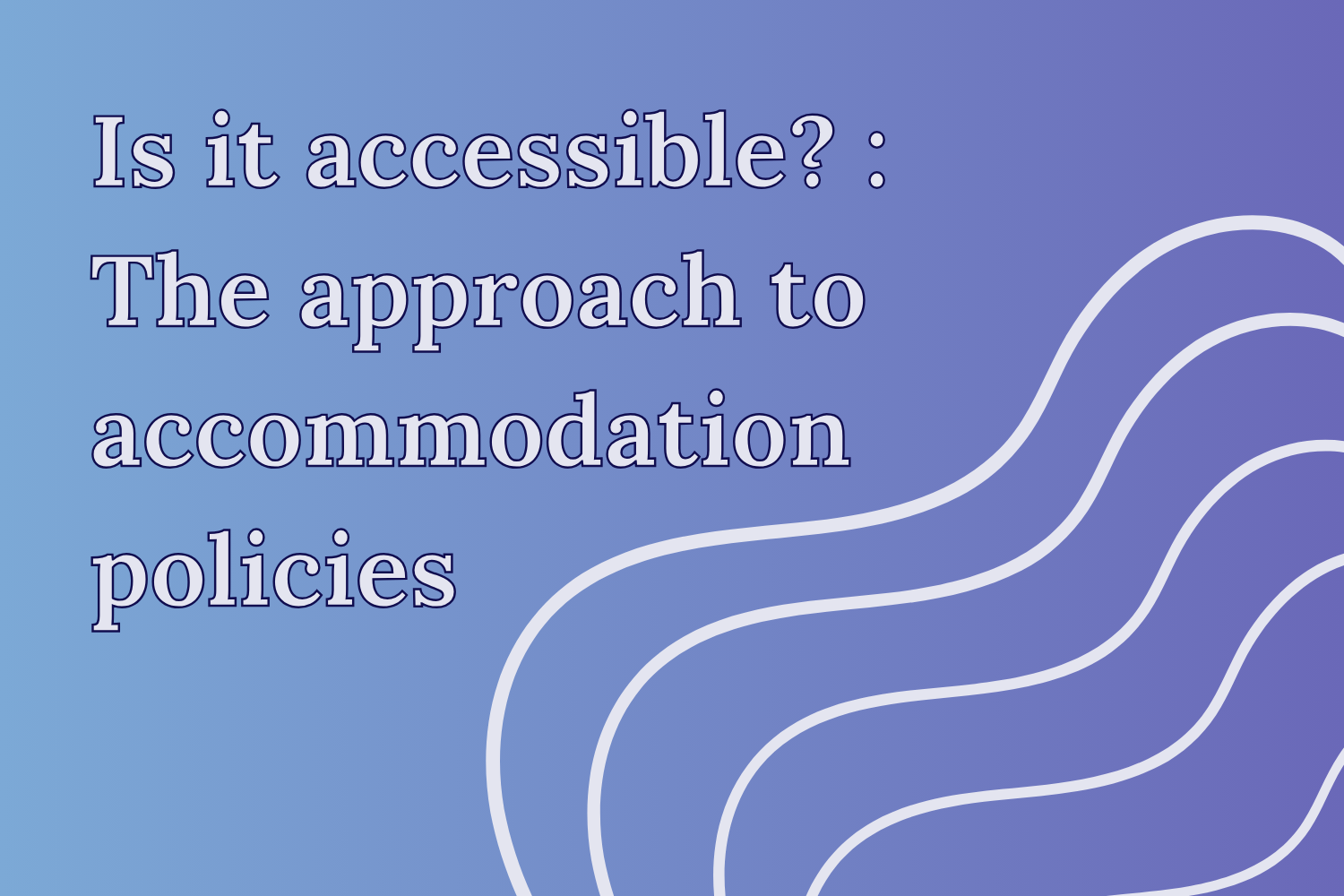More often than not, persons with disabilities will interact with an accessibility accommodation policy that determines whether or not they will be able to access activities and services. The type of policy typically exists in education and employment but can also exist for government services, community services, and more.
An accessibility accommodation policy will consist of elements to structure the policy
-
Who is the policy for
-
What are scope of the policy
-
What problem is it trying to solve and to what degree
-
Who is qualified or allowed to utilize the policy
-
What parties are involved in the situation
-
The responsibilities that each party have
-
Potential limitations of the policy
The significant barrier to these policies is that a person who needs accommodations has to disclose their diagnosis. Along with the disclosure, there is also the need for proof from a medical professional.
For some accommodations, it can make sense. If there are financial and capacity resources needed, people need to be prepared to provide the service and assistive technologies. It also accounts for the diversity of experiences and opportunities (or lack of) that shapes what a person's needs to meaningfully participate.
However, the policies can also be designed to maintain the status quo of viewing accessibility as accommodations needed for persons with disabilities instead of inclusion of persons with disabilities by providing access. If your governments are working on enacting legislation that promotes accessibility and inclusion, there can be the initiative to shift to inclusion of persons with disabilities. However, if no accessibility legislation exists for the area and responsibilities of what you are attempting to access, it can be proven difficult with the different perceptions of what access means and looks like.
Majority of accommodations policies are framed around the concept of reasonable accommodations, undue hardship, and funding rules. It is the duty to accommodate persons with disabilities to meaningfully participate.
-
Reasonable accommodations are accommodations that can be made until the point of undue hardship
-
Undue hardship is when an accommodation costs too much or creates health and safety concerns. However, there has to be sufficient evidence. Not all hardships are considered undue hardship if the evidence is not enough to justify the discrimination.
-
Funding and/or financial resources is a significant barrier to most people. Whether it is the barrier of entry with the need for a diagnosis according to the rules or the cost of the accommodation for an individual or organization that may not have sufficient funds it is important to consider how the process can also set up to create barriers and inaccessibility.
So, should it be designed this way?
Not all accommodations require services and resources that cost a significant amount of financial resources. Sometimes, it is just a matter of changing the attitudes and behaviours that existed for so long. Sticking to the status quo of “this is the way things always has been” is not an effective way to be inclusive and accessible.
By taking a human rights approach, incorporating universal design, and designing from the beginning can be approaches that can migrate if not remove barriers for so many people. Changing policies and processes that encourage the status quo is an incentive to provide more tools, resources, and ideas to create a society that values accessibility and inclusion.
More importantly, positioning people as the knowledge holder of their own experiences encourages listening and collaborating to provide the best experience possible within the resources that exist. The first time is always the hardest, after that, it can be part of your process that you will never go back to the previously determined status quo.

